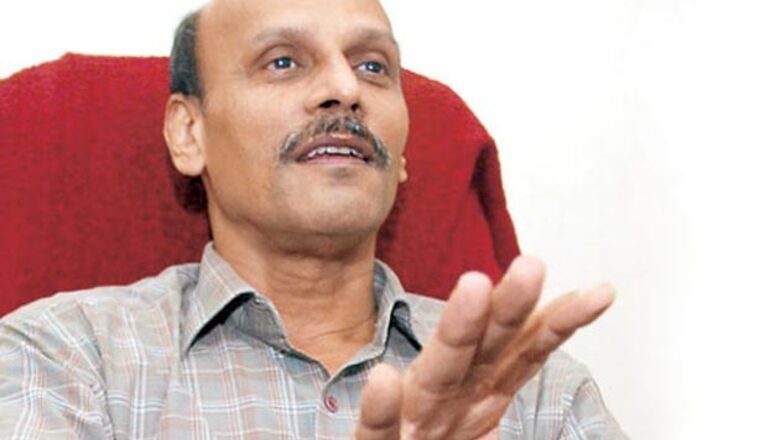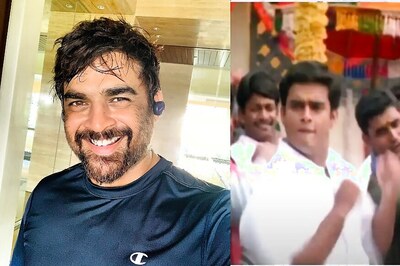
views
Mumbai: Hours after the Supreme Court upheld Ajmal Kasab’s death sentence on Wednesday, one man sitting in his office at Crawford Market was smiling jubilantly, as he fielded incessant phone calls. This is a moment of vindication for Ramesh Mahale, investigating officer for the 26/11 terror attack. It was under this cop that a team of investigators worked against time to file a mountainous 11,700-page chargesheet against Kasab, completing the Herculean task in a matter of 90 days.
Sitting in his Crime Branch unit-I office, Mahale was the man of the hour, as congratulatory messages and phone calls from colleagues and superiors kept his phone buzzing. Mahale’s exceptional skills of organisation, documentation and leadership have helped wrest justice for 166 victims of terror from November 26, 2008. 16 of them were Mahale’s comrades in the police force.
“It took 90 days for a team of 99 officers to compile the 11,700-page chargesheet. We worked at breakneck speed from 8 am to as late as 2 am to ensure that the chargesheet was filed in the stipulated time,” Mahale said, glowing with pride.
A total of 12 FIRs were filed across the city in relation to the attacks. For every FIR, a police officer was designated two assistants and a computer operator. Three to eight police constables also assisted each of these teams with fieldwork. Fewer officers were assigned to the FIRs pertaining to vehicles stolen by the militants.
Mahale, who had earlier assisted in investigations into the 1993 bomb blast, was appointed as head of the investigation for the 26/11 terror strike about three days after the carnage ended with the arrest of Ajmal Kasab and the killing of nine terrorists by NSG commandos.
“Some of our best officers lost their lives in the attack. When my superiors told me that I would have to step in as an investigating officer, I was proud. I decided that I would prove myself worthy of their expectations and started investigations on that very day,” said Mahale.
Mahale rallied round his team as it burnt the midnight oil to compile the mammoth chargesheet, which led to the historic judgement on Wednesday. A supplementary chargesheet, 1,500-page long, was also submitted in court. Investigations into the case had captured attention across the globe, with FBI officials being examined at an Indian court for the first time in history.
The doggedness and hard work put in by these officers was made evident when Supreme Court Justice Aftab Alam in an open court mistakenly assumed that the paperwork had been submitted by the CBI, a national level investigative body. It was only after someone narrated to him the full form of DCB-CID (Detection Crime Branch-Crime Investigation Department) that he realised that Mumbai Crime Branch officials had compiled the chargesheet.
Celebrating the success of the Crime Branch, Mahale’s superior Himanshu Roy, the joint commissioner of police, said, “This is a very big achievement for the Crime Branch and with this we have proved that our fight against terrorism is very serious.” The Crime Branch is now expecting to repeat its feat in the Abu Jundal case.
Investigations began with the verification of those rescued from Taj and Oberoi hotels. The cops verified the identities of the tourists with the help of documents submitted at the hotel, while the staffers’ identities were crosschecked with the hotel administration.
In the next step, statements were recorded. In a span of 90 days, Mahale and his team recorded around 2,000 testimonies.
“Recording of statements was followed by the submission of samples to the forensic laboratory for examination. Other tasks included transcribing the conversations of terrorists with their handlers in Pakistan, and verification of CCTV footage. It was a case with a vast body of evidence, we had to collect the minutest of evidence of the incident and get hold of as many eyewitnesses as we could,” Mahale added.
After gathering all possible evidence, Mahale’s team managed to wind up investigations four days ahead of the deadline. The last few days were spent aiding an assistant commissioner of police who was asked to compile paperwork for the Unlawful Activities (Prevention) Act.
Mahale, an officer from the 1983 batch, had assisted investigations for the Dadar explosion in the 1993 bomb blasts. He also carried out investigations in several high-profile cases in recent history, including the Azad Maidan riot, the fire at Mantralaya, the killing of MiD DAY crime editor J Dey, and investigations into the role of Abu Jundal in the 26/11 attacks.
In his career, Mahale has worked with several police stations including NM Joshi Marg, Yellow Gate, Dadar and Sahar. He was deputed in the Anti-Corruption Bureau for six years before taking over as the senior police inspector of Crime Branch unit I.




















Comments
0 comment